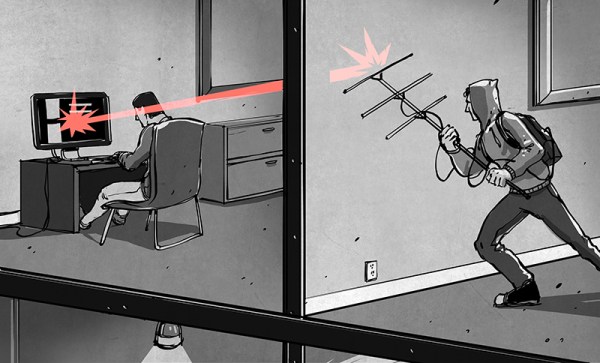Electronics leak waves and if you know what you’re doing you can steal people’s data using this phenomenon. How thick is your tinfoil hat? And you sure it’s thick enough? Well, it turns out that there’s a (secret) government standard for all of this: TEMPEST. Yes, all-caps. No, it’s not an acronym. It’s a secret codename, and codenames are more fun WHEN SHOUTED OUT LOUD!
The TEMPEST idea in a nutshell is that electronic devices leak electromagnetic waves when they do things like switch bits from ones to zeros or move electron beams around to make images on CRT screens. If an adversary can remotely listen in to these unintentional broadcasts, they can potentially figure out what’s going on inside your computer. Read on and find out about the history of TEMPEST, modern research, and finally how you can try it out yourself at home!
Continue reading “TEMPEST: A Tin Foil Hat For Your Electronics And Their Secrets”



 For resistors, you’ll also have to reckon with temperature dependence as well as the same range of piezoelectric and inductance characteristics that capacitors display. Worse, resistors can display variable resistance under higher voltages, and actually produce a small amount of random noise:
For resistors, you’ll also have to reckon with temperature dependence as well as the same range of piezoelectric and inductance characteristics that capacitors display. Worse, resistors can display variable resistance under higher voltages, and actually produce a small amount of random noise: 




 Depending on whom you ask, the IoT seems to mean that whatever the thing is, it’s got a tiny computer inside with an Internet connection and is sending or receiving data autonomously. Put a computer in your toaster and
Depending on whom you ask, the IoT seems to mean that whatever the thing is, it’s got a tiny computer inside with an Internet connection and is sending or receiving data autonomously. Put a computer in your toaster and 









